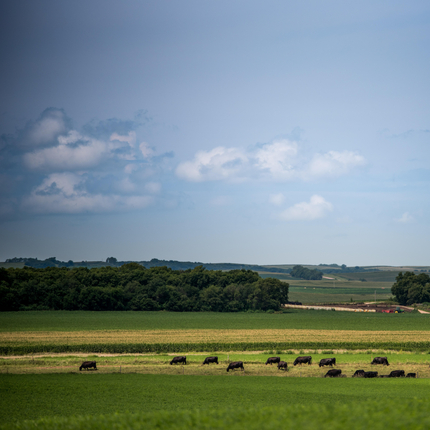For almost four years, Anna Johnson has been the leader of the agricultural policy portfolio at the Center for Rural Affairs. Recently, she shared her thoughts on the Center’s agricultural policy development when she joined host Michelle Rathman on the podcast Rural Matters. The policy manager also gave her insights on the impact on small farmers due to COVID-19, among other topics.
This episode of the podcast was the final installment of Rural Matters’ four-part series on rural economic and community development. Matt Dunne, founder and executive director of the Center on Rural Innovation also joined the podcast to offer his perspective.
Advocating for the issues that matter most
The coronavirus, and resulting restrictions put in place around the world, has changed how we live our lives, how we survive. During these challenging times, the Center for Rural Affairs feels there is a need to focus on change and shifts in the way rural economies are viewed.
“We want to make sure our policy is directed by the people it’s impacting,” said Anna. “We have programming that works with people in rural communities on the rural lending side and the beginning farmer side where we form those relationships and form that kind of direct work. We see what issues those folks are struggling with and then use that info to inform our policy advocacy.”
Evolution of agriculture
The Center for Rural Affairs currently works with small to midsize family farms in Nebraska and the Midwest, though when the organization was founded several decades ago, the makeup of the agriculture community looked different. At that time, there were many more corn and soybean farms, and many more that also had livestock.
“There are still a lot of those farms, but the number has been shrinking for a variety of structural reasons,” said Anna. “We’re still working with those folks and working on policies that support them.”
These policy topics range from conservation programs to crop insurance.
She said we’ve also seen an increase in the numbers of very large farms and really small farms.
“So, we [also] do some work with those folks in the beginning farmer space who are doing more diversified small operations—maybe it’s vegetables, maybe it’s goats, maybe it’s fruit trees, maybe it’s a combination of all these things,” Anna said.
The need for federal policy support for small farms
In response to the coronavirus, farmers have been offered federal support. The Coronavirus Food Assistance Program offered $16 billion in payments to farmers and ranchers who raise eligible crops and livestock. In late June, at the time of recording, approximately $4 billion of that money has been distributed so far, a majority to corn, soybeans, other commodities, and livestock, as well as some to speciality crops and dairy.
“It’s important that there’s been some attention to the impact on farmers, and some light shed on our meat production system,” Anna said. “There are many producers out there with large livestock operations who hit some serious bumps in the road as the packing plants have closed.”
Livestock farmers are not the only ones pivoting their operations.
“Every sector of ag is struggling right now,” Anna said. "As commodity prices have been dropping, as livestock prices have been fluctuating, as the folks who sell at farmers markets, which may now be closed, may be open—there’s a lot of struggle right now.”
Though it’s hard to come up with a solid strategy when faced with so much uncertainty, there is a bright spot for some.
“For those who sell to local markets, the ability to shift to online sales has helped,” said Anna. “Those who have been able to pivot, who have those computer skills, who have broadband, there’s been some opportunity, but that shift is happening not at their own pace, but at the demands of the broader world, which has also added extra stress.”
Current agricultural policy
The Center for Rural Affairs continues to work on agricultural policy to help those in need. Anna keeps her eyes on the future with the 2023 farm bill, when she’ll have the opportunity to work toward bigger goals.
“I have my eye on the next farm bill because it’s always a big job to move stuff through,” she said. “This year, everything has been upended as the pandemic has hit every aspect of our lives. We’ve definitely pivoted to focusing on the space around coronavirus assistance for farmers.”
Why small rural farms matter today
Even if you don’t live in a rural area, or know anyone who does, remember that family farms are a vital element in maintaining strong, thriving towns.
“I think a piece of it goes back to the vibrant rural communities,” said Anna. “As you lose the small to midsize farms, it drains some of the health out of the rural communities and that leads to a whole cycle of trouble that those communities then have to deal with—you lost all these other institutions that keep the community going.”
Anna says we must consider the idea that we’re all in this together, and what that means in different parts of the country.
“How do you relate to and understand people from different places than you who have different experiences than you?” she said. “I think that there’s certainly a need for everyone to take a look at what their specific experiences are and try to have a broader understanding of what rural struggles are.”





